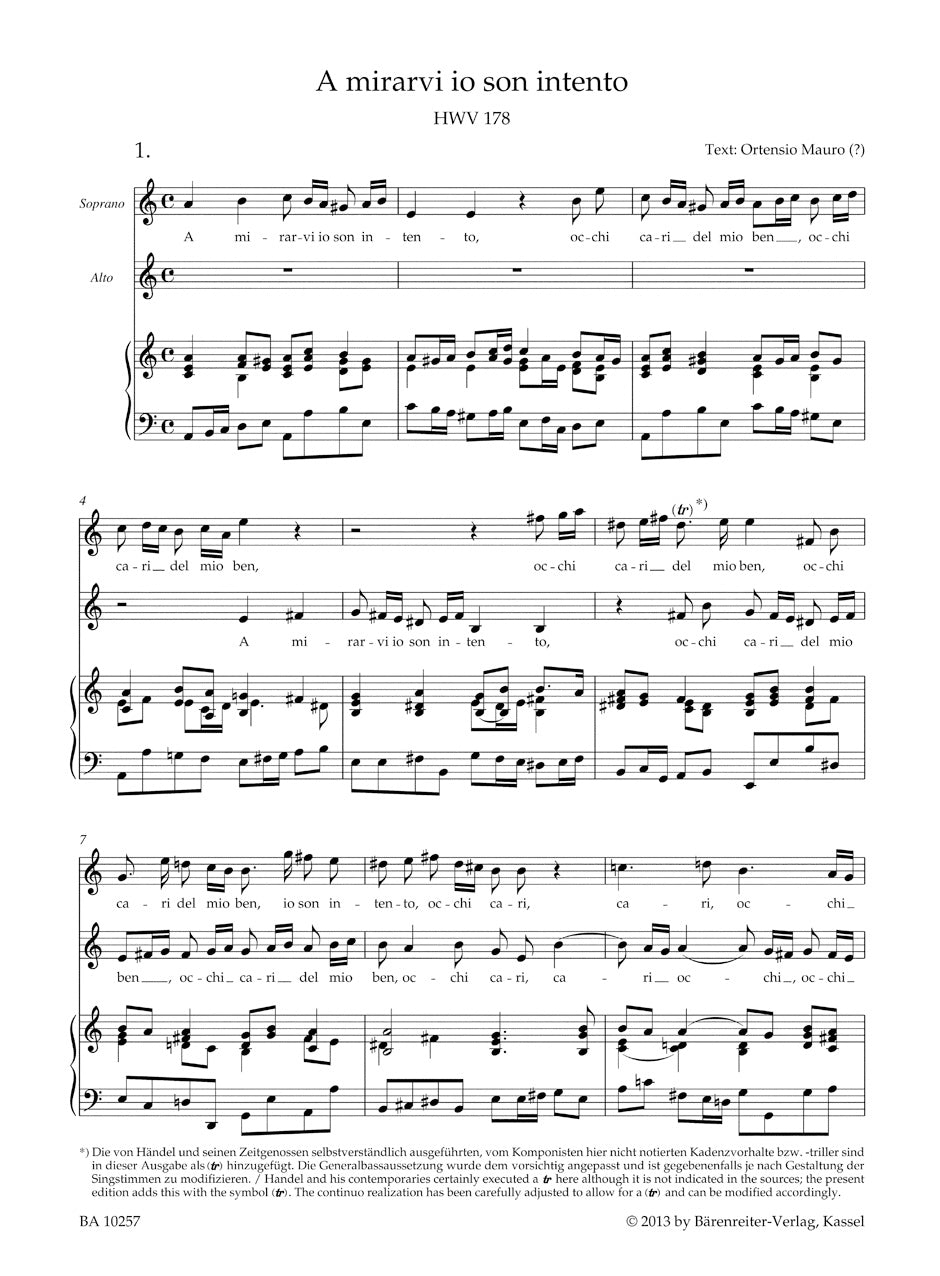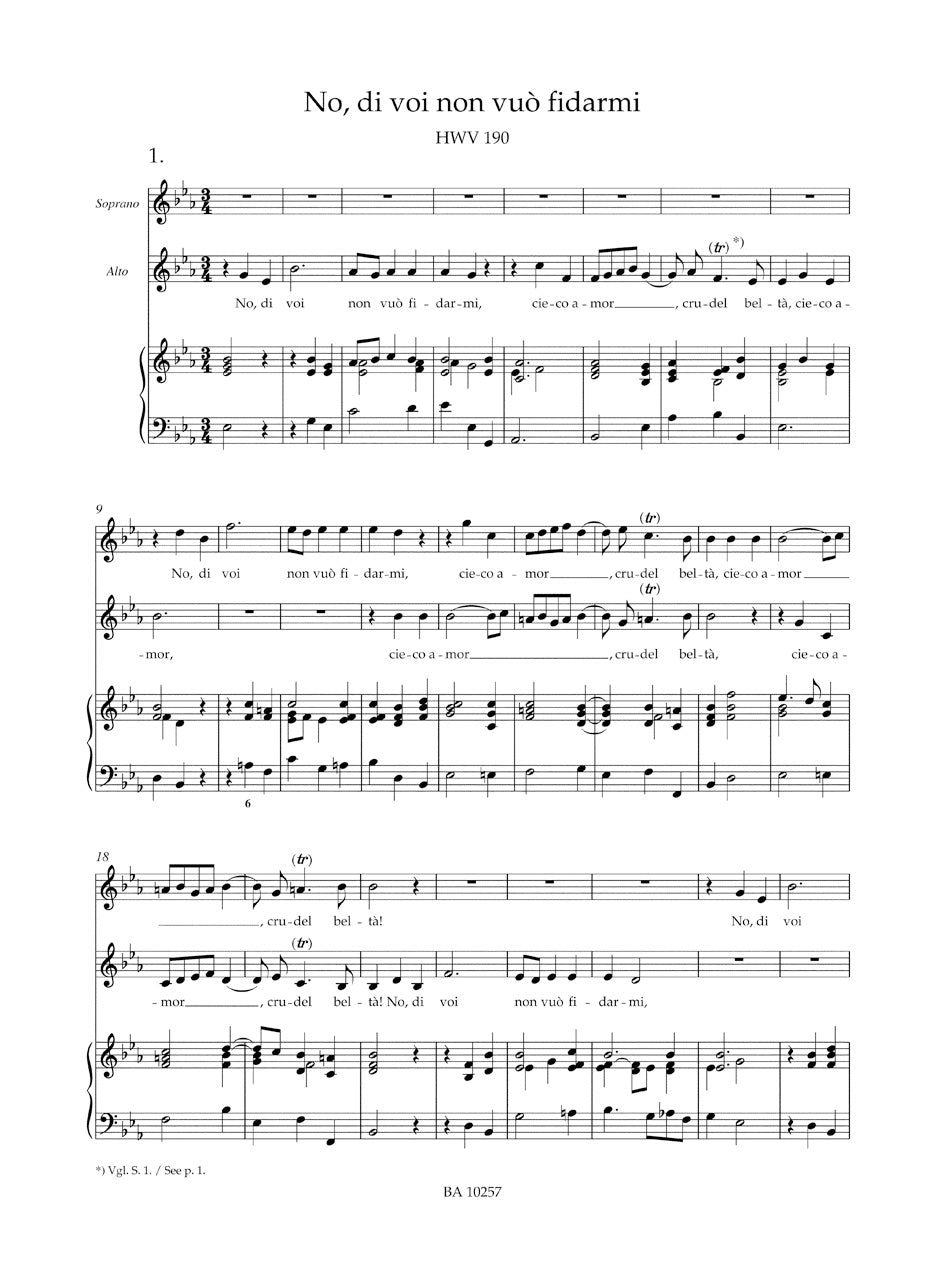Handel: Chambers Duets, HWV 178, 181, 185, 186, 190, 197
In stock and typically ships within 1 business day.
- Composer: George Frideric Handel (1685-1759)
- Instrumentation: Basso continuo, Soprano, Alto
- Work Language: Italian
- ISMN:
- Size: 9.1 x 11.8 inches
- Pages: 89
- Urtext / Critical Edition
Description
By means of their high degree of consistency and maturity, Handel's chamber duets constitute a highlight of this genre. The six chamber duets for soprano and alto selected for this volume were written in 1710–12 in Hanover (HWV 178, 185, 197) and 1740–45 in London (HWV 181, 190, 186). They are musically demanding and structured contrapuntally: the earlier works are stricter, more scholarly and more elaborate in terms of counterpoint but masterly in their craftsmanship. The later ones are composed somewhat freer, but more compact. - Urtext edition based on the "Halle Handel Edition" - Clear, idiomatic realization of the continuo part - Includes a separate continuo part without realization Contents "A mirarvi io son intento" (HWV 178) / "Conservate, raddoppiate" (HWV 185) "Tanti strali al sen mi scocchi" (HWV 197) / "Beato in ver chi può" (HWV 181) "No, di voi non vuò fidarmi" (HWV 190) / "Fronda leggiera e mobile" (HWV 186)
Works:
- A mirarvi io son intento, HWV 178
- Conservate, raddoppiate, HWV 185
- Tanti strali al sen mi scocchi, HWV 197
- Beato in ver chi può, HWV 181
- No, di von non vuò fidarmi, HWV 190
- Fronda leggiera e mobile, HWV 186
Publishers use a lot of words to describe what they sell, and we know it can be confusing. We've tried to be as clear as possible to make sure you get exactly what you are looking for. Below are descriptions of the terms that we use to describe the various formats that music often comes in.
Choral Score
A score for vocalists that only contains the vocal lines. The instrumental parts are not there for reference. Generally, cheaper than a vocal score and requires multiple copies for purchase.
Facsimile
Reproductions of the original hand-written scores from the composer.
Full Score
For ensemble music, this indicates that the edition contains all parts on a single system (there are not separate parts for each player). In larger ensembles, this is for the conductor.
Hardcover
Hardbound. Generally either linen-covered or half-leather.
Orchestral Parts
Similar to a wind set, this is a collection of parts. In the case of strings, the numbers listed are the number of copies included, though generally these are available individually (often with minimum quantities required).
Paperback
When publishers offer multiple bindings (e.g. hardcover) or study scores, this is the "standard" version. If you're planning to play the music, this is probably what you want.
Performance / Playing Score
A score of the music containing all parts on one system, intended for players to share. There are not separate parts for each player.
Set of Parts
For ensemble music, this indicates that there are separate individual parts for each player.
Solo Part with Piano Reduction
For solo pieces with orchestra, this is a version that contains a piano reduction of the orchestra parts. For piano pieces, two copies are typically needed for performance.
Study Score
A small (think choral size) copy of the complete score meant for studying, and not playing. They make great add-ons when learning concertos and small chamber works.
Vocal Score
A score prepared for vocalists that includes the piano/organ part or a reduction of the instrumental parts.
Wind Set
For orchestral music, this is a collection of wind and percussion parts. The specific quantities of each instrument are notated.
With Audio
In addition to the printed music, the edition contains recordings of the pieces. This may be an included CD, or access to files on the internet.
With / Without Fingering (Markings)
Some publishers prepare two copies - a pure Urtext edition that includes no fingering (or bowing) suggestions and a lightly edited version that includes a minimal number of editorial markings.





